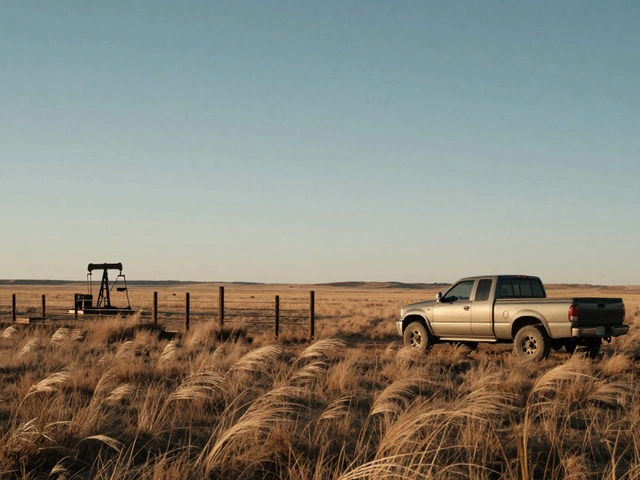You don’t need a whiteboard covered in equations to spot a solid property deal, but you also can’t just rely on your gut and the pretty front porch. Investors, from newbies to pros hustling for their tenth property, seem obsessed with the 2% rule. The name gets thrown around in Facebook groups and at casual barbecues across suburbs, and not just by bearded blokes in flannel or suited-up gurus. Here’s the kicker: most people talk about it, far fewer know how it actually works or why. Ever heard a mate say, “If it hits the 2% rule, just buy it!”—but then they couldn’t really explain what that means? Let’s pull the curtain back.
Breaking Down the 2% Rule: What Does It Say?
The 2% rule seems simple at first glance, but most people only get the surface level. The basic idea? A rental property is a strong cash flow candidate if the monthly rent equals or exceeds 2% of the total property purchase price. So, if you shell out $300,000 for a house, you’ll want to rake in $6,000 per month in rent (yep, two percent of $300,000). Some call this ambitious, especially in today’s property markets, but it’s not impossible in certain regions or property types.
This “rule” is more of a super-fast screening tool. Investors weary of hours spent crunching numbers love using it to decide if a rental is even worth a closer look. It isn’t a guarantee. Just because something ticks the 2% box doesn’t mean you’re getting a golden goose, and sometimes the best properties will miss the cut according to this metric. But as a first pass? Pretty handy.
Let’s be honest—truly finding properties that fit the 2% rule, especially in big Aussie cities like Sydney or Melbourne, is rare. In Adelaide, where I live, decent rental yields are easier to find, particularly on the lower end of the market or with “ugly duckling” properties. There are even more bargains hidden in regional towns, where property prices stay low but rental demand remains strong. Still, chasing the 2% rule can send you off in weird directions if you’re not careful.
Crunching the Numbers: How 2% Rule Plays in Real Life
Let’s get specific. Here’s how you’d actually use the 2% rule: you’re eyeing a house listed for $350,000. Two percent of that gives you $7,000, which means you’d need the rent to be $7,000 a month—or roughly $1,615 per week. Pretty steep for most suburbs in Australia, especially for an entry-level property. So, right away, you see why some people say the 2% rule is more fantasy than fact in hot markets.
If you dip into older units needing a reno, or look at blocks of flats in smaller regional towns, suddenly you’ll spot places getting close to (or even beating) the magic 2%. This often comes with a catch—properties may be in high-vacancy areas, have lurking maintenance nightmares, or attract tenants that make landlords nervous. If the deal looks too good to be true, dig deeper on things like vacancy rates, tenant quality, and ongoing costs.
Let’s take a real example using actual data. According to CoreLogic’s 2024 rental yield snapshot, average gross rental yields in Australian capitals hover around 3.6%. But gross yield is annual (rent per year divided by property price), while the 2% rule is about monthly return. Here’s a quick comparison table for perspective:
| City/Region | Median House Price | Median Monthly Rent | Actual % (Monthly Rent/Price) |
|---|---|---|---|
| Adelaide | $680,000 | $2,300 | 0.34% |
| Broken Hill (NSW) | $170,000 | $1,200 | 0.71% |
| Elizabeth (SA) | $385,000 | $1,400 | 0.36% |
| Regional QLD | $290,000 | $1,700 | 0.58% |
No surprise—finding genuine 2% rule properties in Australia is like finding a unicorn at your local footy ground. They usually show up in the US, where properties are sometimes dirt-cheap compared to rents, hence why American YouTubers hype it up. In Australia, if you hit even 1% monthly, your property’s a cash flow machine.

The Pros and Cons: When to Trust the Rule… and When to Ignore It
The biggest win of the 2% rule? Speed. You can scroll through listings on the real estate portals and rule out 90% with just a few taps on your calculator. It filters obvious losers before you spend hours in spreadsheets or do property inspections. This also helps newer investors get a feel for what “good” rent returns look like.
But here’s the catch: real estate isn’t just about simple math. The 2% rule ignores loads of important details—expenses like rates, insurance, maintenance, property management, and vacancy. A house with sky-high rent but double the average costs might still be a dud once you map it all out. Also, the 2% rule doesn’t care about capital growth, and Aussie investors love a good capital gain. A place that pays its way each month is great, but that mansion in Glenelg with the sweet ocean views might skyrocket in value, even if its rental yield feels puny now.
You also have to watch out for the “too cheap to be true” trap. Properties that match the 2% rule on paper sometimes have underlying problems: are they in struggling towns with limited long-term prospects? Will vacancy rates leave you bleeding money between tenants? Has a recent spike in rent distorted the numbers, only for the local market to crash when a nearby mine closes? These risks matter.
Good investors pair the 2% rule with smarter research. Always ask: Does the local council support new industries or jobs? Are there major infrastructure upgrades happening? Has the area’s population steadily grown, or is it shrinking? Drill into school ratings, access to public transport, and whether developments nearby will help or hurt your property’s value.
Beyond the 2% Rule: Smarter Ways to Crunch the Cash Flow
Don’t let one rule run your life. Cash flow is complex. The better benchmark in Australia is the “gross rental yield”—that’s annual rent divided by purchase price, shown as a percent. If your property nets 5-6% gross yield or higher, you’re ahead of the pack. In high-demand suburbs, yields drop as buyers pay more for capital growth, while regional areas push yields up but sometimes kill long-term value.
Dive way deeper into the math before buying. Build a proper property spreadsheet. Include every ongoing cost: rates, water, property management fees, routine maintenance, landlord insurance, mortgage interest, even buffer money for repairs. Then, compare your predicted income to all those costs. That’s your actual cash flow, and it’s the stat that saves (or wrecks) your bank account, not just a magic 2% number.
Some savvy investors pull out the “50% rule,” another quick-check tool. Basic version: expect about half your rental income to go towards all costs and expenses, before mortgage payments. What’s left pays your debt, and anything beyond that is yours. Doing the work on both the 2% and 50% rules gives a better snapshot, but always step back and check the bigger picture: is this property worth your time versus other deals out there?
Don’t skip due diligence. Check what comparable rentals are actually earning right now, not what agents say. Look for hidden costs in strata fees if you’re eyeing units, or high ongoing maintenance for older homes. See if the area has a history of long vacancies. Tiny details can turn a perfect 2% property into a money pit within a few months.

Tips for Finding, Vetting, and Making the Most of a 2% Deal
If you’re keen to land a 2% rule winner (or as close as you can get in the current Aussie market), focus your search on smaller regional towns, rough-but-rising suburbs, or properties in need of light reno work. Target listings where the seller is motivated, or the home’s been on the market for ages—there’s more room to negotiate, and sometimes you can talk the price down far enough to bump your rental yield up to dizzy heights.
Getting good at numbers makes a huge difference. Build your own list of rules for quick screening—set a minimum rent yield, maximum mortgage rate, and buffer for unplanned costs. Technology helps: spreadsheet apps like Google Sheets or specific property calculators take your analysis up a notch without needing an accounting degree.
Don’t forget about people skills. Chat with property managers before buying. They know the honest rent you’ll get, what tenants will look for, and the little issues that make or break an investment. Sometimes properties that looked ugly online are goldmines after small improvements—think fresh paint, modern appliances, or a tidy garden—that can suddenly justify a much higher rent.
The market can shift overnight. Keep up with local property news and broader trends (like interest rates, local job expansions, or zoning changes) which can instantly spike or slash rental demand. What looks like a rock-solid 2% one year can turn into a sub-1% slog the next if the suburb sours. Sticking to boring fundamentals—tight supply, easy access to jobs, growing populations—keeps your odds up, even if you don’t always hit the textbook 2%.
The 2% rule might not be the holy grail, but getting your head around how it works—and when to use it—could stop you buying a lemon. It is less about the number, and more about what the number makes you ask.





